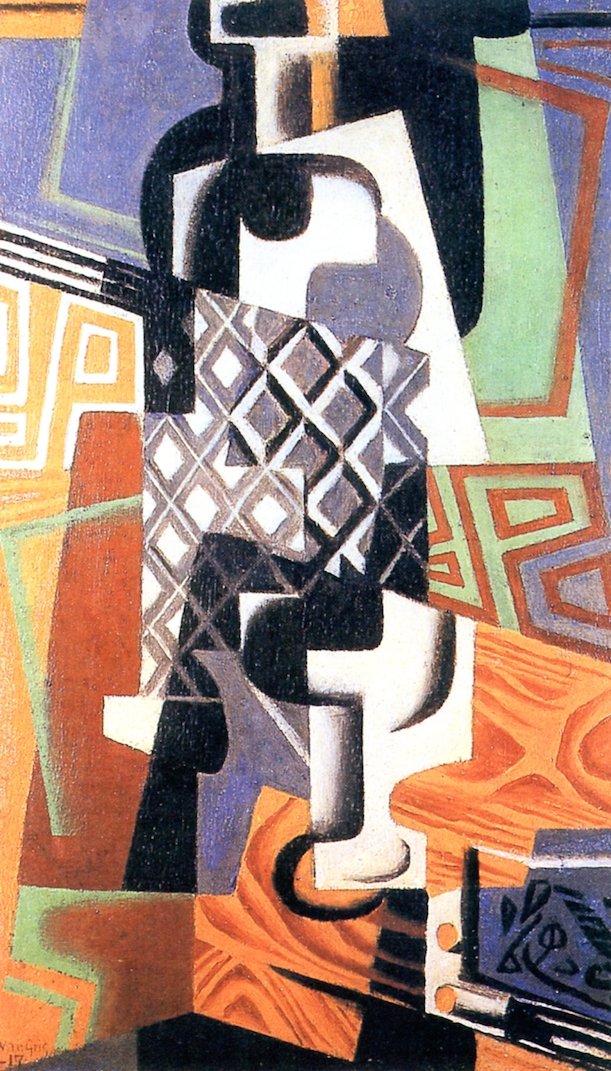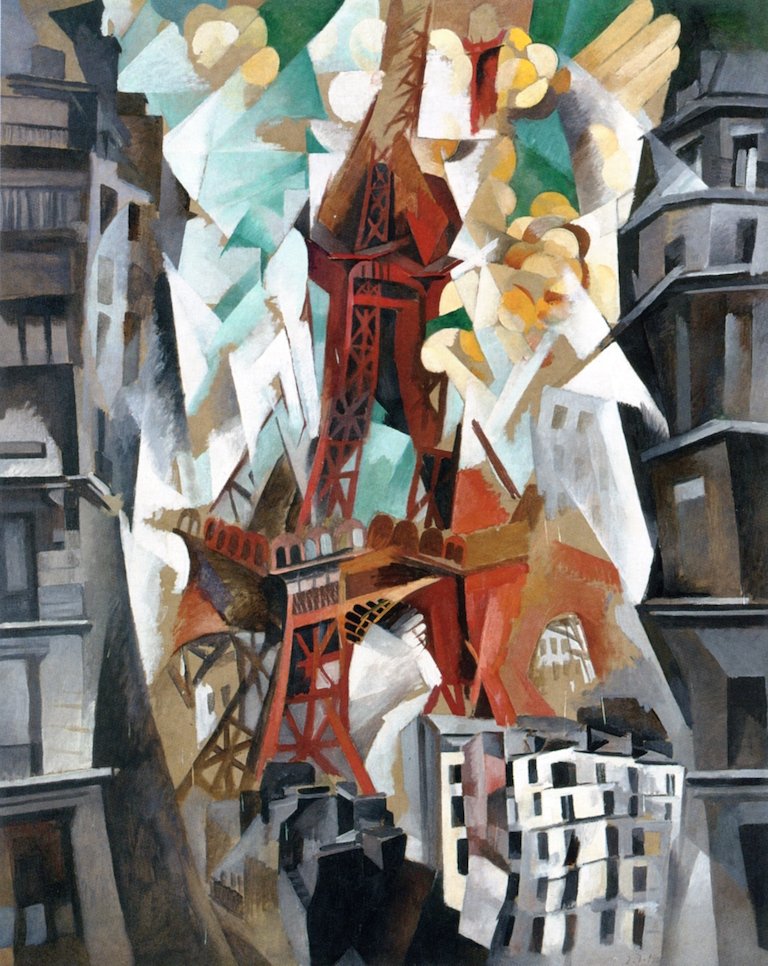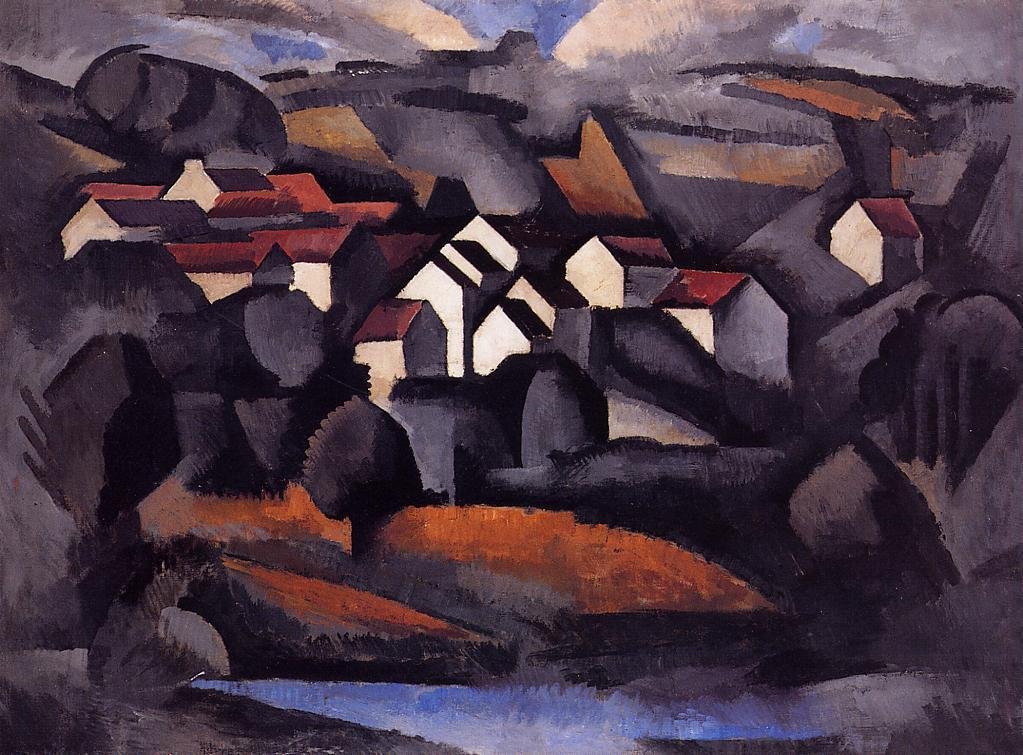
The Style Is Best Known For
- Naked ladies by Pablo Picasso.
- Greyish-brown still lives by Georges Braque.
- Collages and collage-like paintings.
Who, What, and When?
Cubism was developed by artists living in Paris and was popular between 1907 and the mid-1920s. Cubism is best known for its paintings and collages, but its influence filtered into other forms of visual arts, including architecture.
How to Recognize It
- Angular, faceted shapes.
- Distortion.
- It seems like you’re looking at the work through shattered glass.
- Flatness and two-dimensionality.
- Some aspects may be recognizable, but others seem totally abstract
- Collages or collage-like paintings.
- Still lives, often of man-made objects.
- Human faces and forms.
- Faces often look mask-like.
- Browns, greys, and other dark or neutral colors.
- Space is ambiguous.

Background
The first Cubists, notably Picasso, were inspired by a posthumous exhibition of works by the Post Impressionist Paul Cezanne. They loved his transformation of natural features into simple geometric forms. Around this same time, modernists were becoming interested in African art, which featured stylized representations of the human face and body. Picasso decided to expand on these ideas in his Les Desmoiselles d’Avignon (1907). He and his friend Georges Braque experimented together to take their ideas further and further; other French artists soon took up these ideas as well. Cubism was a short-lived movement that lost steam after World War One, but it had far-reaching influenced many subsequent movements.
Underlying Ideas
- Showing a subject from more than one viewpoint at the same time.
- Breaking an object into pieces that can fit together in many different configuration.
- The painting is a physical, two-dimensional object that has its own surface. It’s not just a means of representing another object.
- The object and the background are equally important. Traditional European ideas about perspective are not important.
- Cubists wanted to tap into new ideas about the reality we live in.
Key Artists
- Pablo Picasso
- Juan Gris
- Fernand Leger
- Georges Braque

Two Varieties
Analytic Cubism: Earlier – paintings that take apart objects, analyze them, and put them back together differently.
Synthetic Cubism: Later – collages that bring new elements (like newspapers) into works of art and explore their possibilities for conveying ideas and emotions.
Both types of Cubism were practiced by the same artists. The jury’s still out on which one was more radical.
Don’t Confuse It With
Other works by these artists: Cubism may have been short-lived, but these artists weren’t. Many of them painted in more than one style during their careers. Just because a work is by Picasso or Leger, that doesn’t mean it is necessarily Cubist. To differentiate, look in mind the characteristics mentioned above, and look at dates when in doubt.
Fauvism: Fauvism was another movement developing in France a few years before Cubism. Both styles grew out of Post-Impressionism, but Fauvism focused on innovating with color rather than form.
Abstract art: We’re still not there yet, but we’re getting closer.
Resources
- “Cubism Movement Overview and Analysis”. [Internet]. 2017. TheArtStory.org Content compiled and written by The Art Story Contributors. Edited and published by The Art Story Contributors.
- Rewald, Sabine. “Cubism.” In Heilbrunn Timeline of Art History. New York: The Metropolitan Museum of Art, 2000–. (October 2004).
- Kerrigan, Michael. Modern Art. Old Saybrook, CT: Kanecky & Kanecky, 2005.


